Author(s): Nikhil Sai Yekollu
Detroit has undergone a lot of economical, demographic, and environmental changes over the past few decades. The decline that occurred in Detroit had a strong impact on the state as well. People lost their jobs, many left the city, and population was dramatically decreased. These issues were interlinked with economic inequality, lack of education and lack of affordable housing, etc. Many public issues go unresolved such as low graduation rates, inadequate access to transportation, youth violence, and employment etc. History of ecological disregard has made the city hazardous. Environmental issues such as air pollution, waste recycling and contaminated lakes are a great concern. Research is carrying out from all sides to reduce the intensity of these problems. Upgrading the physical infrastructure of transportation, sanitation and social infrastructures like schools, universities, hospitals, and communities, etc., uplifts the standard of living. Groups of non-profit and environmental justice organizations like Detroit Environmental Agenda (DEA) focuses on interlinked social, economic, and environmental injustices. The main purpose of this paper is to study the present scenario of social and environmental issues for Detroit by the analyzing case studies regarding the issues and suggesting possible solutions for them.
The ongoing, continuous retreat in the United States has hit Detroit especially hard, worsening the destruction depicted previously. A huge number of the dispossessed or surrendered homes are in left, rotting neighborhoods. Property costs have fallen 80% or more in vast pieces of Detroit during recent years. The ongoing liquidations of General Motors and Chrysler partnerships have swollen the positions of the jobless in the city and encompassing metropolitan zone, among laid-off autoworkers as well as among those in united and administration businesses. Official joblessness rates in the city, which have drifted around the 25% imprint for a long time, are relied upon to rise much further. Not only the social issues but also the environmental issues also affected the city of Detroit a lot. Environmental issues such as Air pollution, recycling of waste and leakages of pipelines has been a problematic issue since years. The analysis part consists of social and environmental issues and it is one of the strengths of the paper because of its detailed analysis which includes the numerical data. Images enhances the paper and makes us better understanding of this paper. Assessment part comes out with the suggestions or possible solutions. Though the solutions may not be best suitable it is the only possible option we are left with.
A great deal of spotlight has been on financial advancement in Detroit, yet what many have neglected to acknowledge is that a solid, instructed workforce is significant for important and enduring monetary improvement. Education is the most imperative issue in 2018 in Detroit for a couple of reasons. One is that without instruction an individual will have a hard time bettering themselves. The general population of Detroit needs training with the goal that we can keep on delivering positive impacts on society overall. Second, without a decent government funded educational system we could not care less how attractive you make a structure and the condos, townhouses, and so forth inside said building. The third is legitimately identified above. With a decent state-funded educational system, you can draw great residents. Great residents make good on their regulatory expenses. That taxes are the things that we are absent. That assessment cash pays for police, fire, salvage, water, lighting, waste, and a bunch of administrations that individuals in littler urban areas underestimate. Over the last 20 years, public school districts across the country have closed buildings in response to budget cuts, population shifts, declining enrollment, and alternative education systems. Between 2000 and 2015, 195 Detroit Public Schools closed as enrollment fell from 162,693 students to 47,959, a decline of 71%. There are 93 active school buildings today, compared to over 380 in 1975 [1].
Crime is one of the major problems in Detroit, it includes both violent and property crime. Detroit has one in every of the best crime rates in America compared to any or all communities of all sizes - from the littlest cities to the very largest cities. The violent rate of 2046.5 for each 100,000 was the second most elevated within the country when St louis and regarding multiple times the traditional rate of the agricultural areas. As lately many neighborhoods within the downtown zone of Motown have seen a large decrease in crime whereas the rate stays high within the larger a part of town and considerably affects day by day life [2]. As examination Detroit rate with alternative five cities i.e. Memphis, Philadelphia, Cleveland, Pittsburgh it?s the very best violent rate index compare to alternative in year 2007-09 and 2016-18. The Detroit took high spot in violent crime altogether cities however decline will be seen in property crimes.
Table 1: Comparison of Crime Indices of Detroit with Various Cities| Cities | 2007-2009 | 2016-2018 | ||
|---|---|---|---|---|
| Violent Crime Index |
Property Crime Index |
Violent Crime Index |
Property Crime Index |
|
| Detroit | 1924.1 | 5938 | 2046.5 | 4805.9 |
| Memphis | 1428.7 | 5906.7 | 1820 | 5693.7 |
| Philadelphia | 1441.3 | 4342.7 | 988.8 | 3167.2 |
| Cleveland | 1428.7 | 5906.2 | 1631 | 5394.9 |
| Pittsburg | 1084 | 4107.4 | 782.2 | 3313.4 |
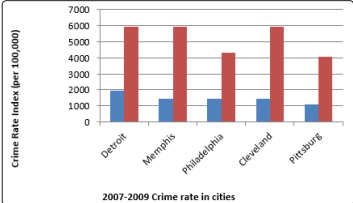
Exhibit 1: Crime Rate Indices in the Past (2007-2009)
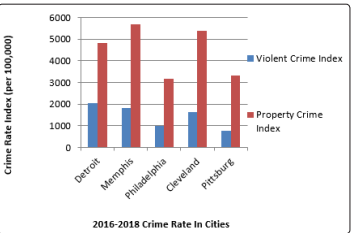
Exhibit 2: Crime Rate Indices at Present (2016-2018)
Michigan?s rate of joblessness is down. Detroit?s is relied upon to keep on declining. In any case, Detroit?s rate is still about twice that of the state. Practically 50% of Detroit?s working-age inhabitants aren?t notwithstanding searching for a job - at 53.4 percent, it?s least workforce support rate in the country and a side effect of destitution and poor instructive achievement. The economy is blasting and the joblessness rates for the country and Michigan are low [3]. In Detroit, the official rate has fallen drastically since cresting at over 28% in 2009. 34.5 percent of Detroit residents lived below the poverty level in 2017 [4]. Employment creation in Detroit isn?t keeping pace with the remainder of the state. Some more seasoned specialists and those with few occupation abilities have surrendered. Moreover, individuals moving without end likewise factor in the falling joblessness rate in Detroit. The city?s biggest challenge is providing enough adult education and job training programs to increase labor force participation.
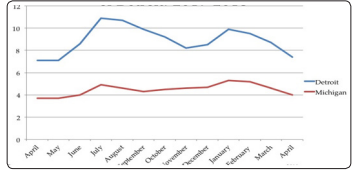
Exhibit 3: Unemployment rate for Michigan and Detroit (2017- 2018)
(URL1,2020, https://images.app.goo.gl/yhSAo3QeQcPcsRU96 )Inhabitants of southwest Detroit are compelled to manage substantial contamination produced from the numerous production lines inside Southwest and encompassing regions, car and semitruck traffic and other ecological stressors influencing the wellbeing of those in the network. There are more than 150 destinations in southwest Detroit discharging synthetic compounds and particles which result in air contamination. These destinations discharge hazardous synthetic concoctions and particles, for example, PM2.5, sulfur dioxide, nitrous oxide, and ozone. Postal districts 48217 and 48209 are home to the largest amounts of ozonedepleting substance outflows in the city of Detroit. Additionally, the regions in Detroit with the most astounding convergence of PM2.5 are likewise the territories with the most astounding Latino populace. Michigan?s Oil Refinery, Steel plants and Power plants are major contributors of pollution. The International Journal of Environmental Research and Public Health detailed that air contamination in the Detroit territory has prompted more than 10,000 restorative issues notwithstanding 6.5 billion dollars in financial misfortunes. Also, they reasoned that about 5.5 percent of yearly passing in the zone is because of introduction to PM2.5 [5].
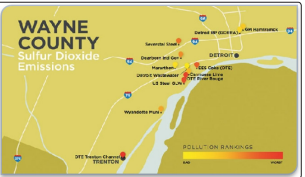
Exhibit 4: Various Plants Exceeding Sulphur Dioxide Limits In
Southwest Detroit Region
(URL2, 2020, https://images.app.goo.gl/3cbY3J1GfV6jrzzV9 )
Marathon Oil Corporation, which works the 250-section of land Detroit oil refinery, purchased the homes of inhabitants in the close-by, generally white neighborhood of Oakwood Heights in 2012 with the goal that they could move. Boynton, for the most part dark neighborhood which is likewise affected by the refinery, was not given a similar offer. The sights of smokestacks, flares, and substantial industry rule the area. Oil tanker trucks thunder through, conveying fuel to a tanker ranch down the road. Solid smells some of the time stir inhabitants amidst the night. In a twomile sweep around the refinery, 70 percent of the emanations were from the steel business, 23 percent from power age, four percent from all other industry, and three percent from Marathon?s refinery, as indicated by the Michigan Air Emissions Reporting System. The refinery processes 132,000 barrels of oil per day, including Canadian tar sands oil- known to be among the dirtiest types of oil. The pollution has been getting worse ever since the refinery built an expansion in 2012 to process tar sands oil. In 2014, the oil refinery emitted 430 tons of nitrous oxide, 83 tons of PM2.5 and 211 tons of sulphur-dioxide [6].
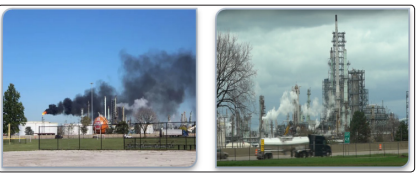
Exhibit 5: Emissions of toxic gases from Michigan Oil Refinery (URL3, 2020, https://images.app.goo.gl/vPhbDvsQCAEvboGj7 )
The greater part of Michigan?s coal plants are over 40 years of age. What?s more, almost 33% of Michigan?s coal plants started activity over 50 years back. A large number of these more seasoned plants are booked to be retired or resigned in the coming years since they are wasteful and present dangers to human wellbeing. Research demonstrates that our state?s nine most seasoned coalterminated power plants transmit contamination that is connected to 68,000 instances of asthma worsening and 180 unexpected losses in Michigan every year. Coal-fired power plants cost Michiganders billions in medicinal services costs. Contamination from Michigan?s nine most seasoned coal-terminated power plants is connected to wellbeing inconveniences that cost Michiganders $1.5 billion every year, or $500 for a group of four. River Rouge - After almost 70 years of administration, DTE Energy Co?s. coal-fired River Rouge Power Plant will close its entryways. The loss of the power plant, booked for a conclusion in 2023, will be ambivalent for the network, authorities state. It?s useful for occupants and the earth, however, the regional government is stressed over declining charge incomes. The closure for this plant is because it has exceeded the federal standard emissions of sulphur dioxide. But there is no fear of losing the jobs, the employees are transferred to another site. 70 percent of the total toxic emissions were from the steel industry, according to the Michigan Air Emissions Reporting System. Severstal plant and AK steel plants are the major steel plants which contributes much to the pollution. Severstal steel plant, originally the Russianowned Severstal, had been sold to AK Steel for $700 million in July 2014. AK steel and Severstal plant emits the levels of sulfur dioxide that exceeded federal standards in Michigan. As medical issues, for example, asthma and breathing issue kept on influencing the South end people group, the push to get organizations to go along and influenced constituents to turn out to be increasingly mindful pushed on. By 2015, 92 schools in Wayne County were overwhelmed in a polluted non-achievement zone [7].
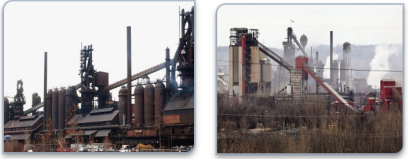
Exhibit 6: AK steel and Severstal steel plants emitting toxic gases (URL4, 2020, https://images.app.goo.gl/s7pyKPtMMYqRXPno9)
Michigan, once considered a pioneer in recycling, now has one of the worst rates among Great Lakes states. About 15 percent of its solid waste is recycled, compared to 35 percent nationwide. Only 67 percent of Michiganders approached curbside reusing or a helpful drop off office as of late as 2013, as per a study by the Michigan Department of Environmental Quality. A few regions, especially in stretches of the Upper -Peninsula and northern Michigan, had for all intents and purposes no helpful access. Indeed, even Detroit, the state?s greatest city, didn?t include curbside administration until 2014, and a little part of now occupants use it on the grounds that the city expects them to select in and purchase a $25 bin. Low landfill costs made Michigan a prime dumping spot for different states - and Canada. In excess of a fourth of waste sent to Michigan landfills in 2017 originated from outside the state, and 82 percent of the imports originated from Canada, as indicated by a Michigan Department of Environmental Quality report. Michiganders sent nearly 12.6 million tons of solid waste to in-state landfills in 2017 alone. Landfill proposals at the time were regularly exceedingly dubious, drawing resistance from preservationists and even region authorities, however, state natural controllers proceeded to greenlight them. With so much additional room, dumping costs dove. And decomposing garbage sends heattrapping methane into the atmosphere. Municipal landfills are the nation?s third-largest source of human-induced methane emissions, according to the U.S. Environmental Protection Agency
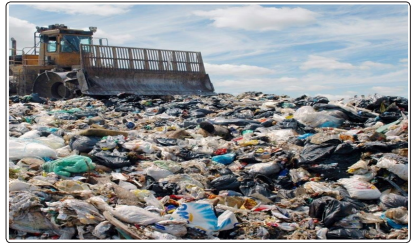
Exhibit 7: Landfilling of waste in Detroit (URL5, 2020, https://images.app.goo.gl/G5GQDySCnktzoALu8)
Quite a bit of Michigan?s water and sewer framework has been disregarded for a considerable length of time, compromising general wellbeing and in urgent need of fix, an endeavour that specialists state could cost $17.5 billion throughout the following two decades. That sticker price does exclude the expense of supplanting lead administration pipes over the express, a danger uncovered by the continuous water emergency in Flint. In 2013 and 2014, almost 25 billion gallons of incompletely treated and untreated tempest and clean sewage streamed into Michigan?s conduits. Not only the sewage and water pipelines but also the gas pipelines are contaminated since years. Michigan?s aging network of gas pipelines carries a heightened risk of corrosion or other material failure that could lead to a fire or explosion. The most serious Michigan gas explosion in the past decade occurred in May 2015 in Chelsea and caused more than $5.4 million in damage to Consumers? property and $358,080 in product loss, according to federal records. Beneath the roads, there are the equally deteriorating pipes that are meant to deliver water for drinking and washing and to carry away the waste. Some of those pipes have been in the ground for more than a century [5].
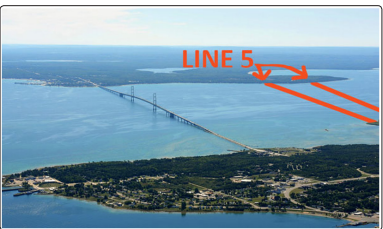
Exhibit 8: Line 5 pipeline system underneath the water (URL6, 2020, : https://images.app.goo.gl/NeXiMe3MuxWLrVpx9)
Huge numbers of the structures are over 60 years of age, and in poor condition following quite a while of conceded upkeep. As most schools shut because of low enlistment, their areas are in neighborhoods that are a long way from perfect for educational reuse. Reuse is the perfect result for a shut school building yet is confounded by a few components: Unlike retail or places of business that can be effectively repurposed into something comparative, schools are reason worked for training. Their layouts are now and then mind-boggling because of different increments through the span of numerous years. crime prevention can be supported through smart surveillance by empowering specialists to have continuous access to video reconnaissance frameworks. The objective is to spot potential episodes that compromise security and oversee occasions as they occur. The City of Detroit has adopted this strategy and made Project Green Light, which takes into consideration productive episode the executives and a shared reaction among natives and the Detroit Police Department. Apart from it should really concentrate in the usage of illegal weapons which are being used to commit a crime. About 53% of Detroiters ages 16-64 are utilized, far lower than the national norm of 75%. The city has 168,000 individuals who are not in the work constrain, for reasons including the absence of education and training. Almost 66% of Detroiters drive to employment outside the city. Furthermore, about 75% of employment inside the city are held by individuals who live outside Detroit. The greater part of Detroiters has just a secondary school recognition or GED, while 62% of employment requires preparing, apprenticeships or 2-year or 4-year degrees. So, there is need to create more educational programs and creating opportunities for small businesses. Focus should be shifted to various sectors to improve the overall unemployment rate.
The state?s financial plan for the environmental guideline is down 75 percent since 2002. The state says none of the regional industrial plants radiate more contamination than permitted, however neighbors state the state does not consider the cumulative impact. Unlike something like 14 states, Michigan does not manage how far away industry can be from homes and schools. There are such a significant number of plants close Harms primary school in Detroit, there is such a great amount of refuse in the city and there are such huge numbers of adjacent houses falling apart. The government knows about the issues common in southwest Detroit and is yet reluctant to make a move in the territory is baffling. Measures should be taken to make sure that industries are far away from neighborhoods. Landfills are the major option for Detroit for the garbage disposal. As opposed to empowering reuse and reusing, state law expected regions to keep up a specific measure of landfill limit. While Michigan has made landfill dumping simpler, it?s done little to enable networks to put resources into reusing. It started curbside recyclers which is the best way of recycling. Though landfill is quite cheaper, but it should be replaced with composting pits as we can use it later for another purpose. The best way to make that conceivable in Michigan is to have exceptionally solid ace reusing strategy or solid economic situations. Beneath the roads, there are the deteriorating pipes that are meant to deliver water for drinking and washing and to carry away the waste. Some of those pipes have been in the ground for more than a century. For instance, Line 5 pipeline. It has been in service more than 15 years. Leakages were happened many times yet not rectified. In the worst outcome imaginable of a Mackinac Straits crack, Line 5 would release more than 2 million gallons of oil, tainting 437 miles of Great Lakes shoreline, and cost $1.86 billion in harms, as indicated by an examination led by Professor Guy Meadows from Michigan Technological University. So, there is an emergency of rectifying the leakages and replacing the contaminated pipes.
It will require solid community administration, an arrangement for speculation and activity, and innovative critical thinking. It should be vital about what?s required to take care of these intricate issues, yet in addition, pioneering about when and how they are settled. What?s more, if it?s to last, the arrangement should be possessed and followed up on by the community. Regulations and measures should be taken by the government to reduce the effect of these issues. However, to obtain a quality environment, it should get rid of these social and environmental issues. If this happens once again the Detroit will shine in its developments.
